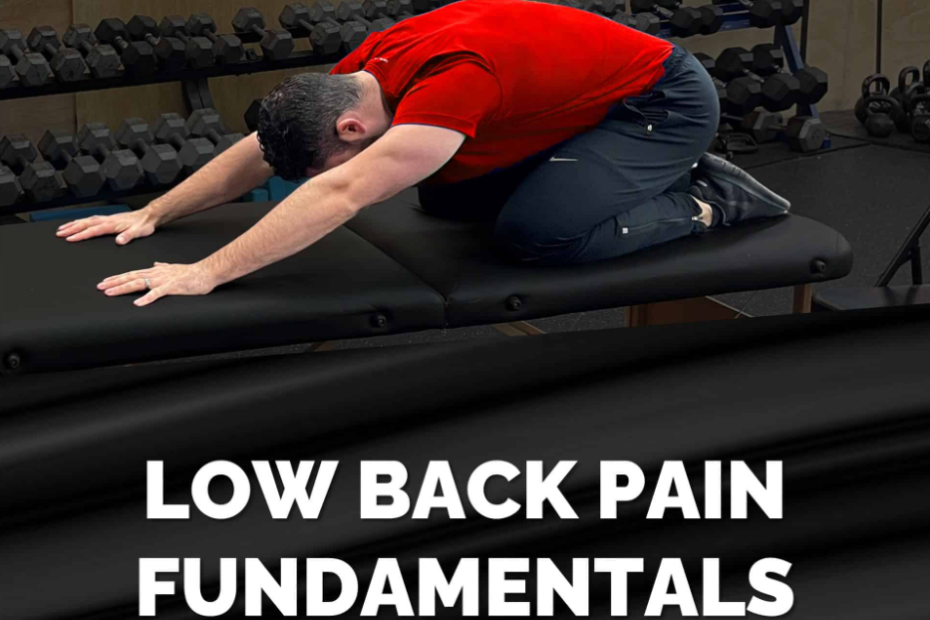Michael Mash – Low Back Pain Fundamentals
Description of Low Back Pain Fundamentals
Low Back Pain Fundamentals Online Course. Learn the latest evidence-based approach to low back pain self-management
In this one-of-a-kind course, you’ll see EXACTLY how we communicate with clients who have low back pain. In fact, we structured the entire course as if we were talking directly to someone with low back pain!
With this unique instructional approach, you’ll learn all about back pain, when to refer out to a healthcare professional, and how to optimize outcomes and quality of life.
What You’ll Learn In Low Back Pain Fundamentals
Module 1: Introduction and How Pain Works
In the last 10 years, our understanding of pain has drastically changed. We now know that pain is a very poor indicator of what’s actually going on inside the body, and that things like herniated and bulging discs are far more common than you may think. In this module, we dive deep into how pain works, teach you the latest evidence-based self-management strategies, and provide recommendations for when to refer out to a healthcare professional.
Module 2: Exercises for Back Pain: A Biopsychosocial Approach
After learning about how pain works, we will dig into how to find tolerable movements so that your clients with low back pain can continue exercising. Using our follow-along PDF guide, you’ll learn how to identify which movements to limit or avoid, which ones to prioritize, and specific exercises to recommend in order to keep your clients moving.
Module 3: Restoring Mobility and Building Back Stronger
After back pain has calmed down, it’s time to build back stronger. You can only avoid painful movements for so long. In this module, you will learn how to help your clients restore once painful movements and how to safely transition to a strengthening program. Many clients finish physiotherapy feeling MUCH better, but need that extra “push” from a fitness professional to help them achieve their higher levels goals. Here’s where you will learn exactly how to do that.
Module 4: Exploring Common Self-Management Strategies
Now that you’ve learned how to have effective conversations with clients who have low back pain, and how to promote safe and effective exercises, we will explore some common self-management strategies. In this module you’ll learn all about stretching, foam rolling, posture, heat/ice, electrical stimulation, and whether you should be recommending them or not for clients with low back pain. We then describe our favorite three self-management strategies to help produce permanent results!
Module 5: Common Low Back Pain Scenarios
In this module we take a thorough look at 3 common back pain scenarios. First, we will cover sciatica and why it happens. Then, we take a close look at the “dreaded lifter’s low back tweak” and how to self-manage this situation. If you have clients who have tweaked their back on a warm-up set of squats or deadlifts, this one is for you! And finally, we talk about how to address situations where someone may have back pain with prolonged walking and standing.
Who Is This Low Back Pain Fundamentals Course For?
Low Back Pain Fundamentals if for fitness and rehab professionals and anyone interested in learning more about low back pain self-management.
About Michael Mash
Dr. Michael Mash, Physical Therapist and Barbell Coaching Expert to help fitness and rehab professionals improve their management of clients with pain or mobility limitations. He received his Doctor of Physical Therapy in 2016 from Duquesne University and his Bachelor of Science in Biology from Saint Vincent College in 2014.
Dr. Michael holds the prestigious Certified Strength and Conditioning Specialist (CSCS) title given by the National Strength and Conditioning Association. Additionally, he is certified in the Selective Functional Movement Assessment (SFMA), and Functional Movement Screen (FMS), two systems dedicated to assessing human movement.

